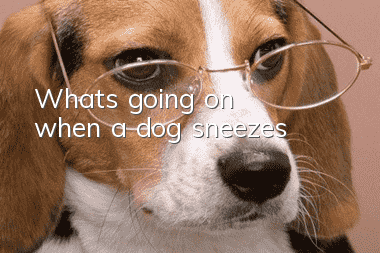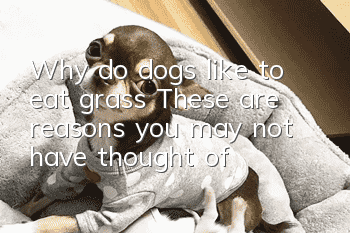Chihuahua file introduction and breeding knowledge

Chihuahuas are native to Mexico and were originally kept as pets by the Toltic people of Mexico. The name of the Chihuahua dog comes from a province in Mexico named Chihuahua. Chihuahuas had a rough fate and were treated cruelly. The original Toltic people believed that Chihuahuas were the sacred dogs of the ancient Inca Empire. If they were allowed to accompany the deceased, they would make the deceased more peaceful and peaceful, so many Chihuahuas were buried with their owners. Chihuahuas living in the United States are also facing bad luck. Perhaps because the delicious meat of Chihuahuas is very suitable for the Indians' appetite, Chihuahuas are served as delicacies on the Indian tables. However, as time went by, Chihuahua conquered women and children with its appearance and personality, and successfully got rid of the bad luck of being buried with people and being cooked, and successfully transformed into a family pet. It is also considered to be the most valuable among the world's toy dogs. One of the affected species.
1. Chihuahua appearance characteristics
Hair: Chihuahuas are divided into short-haired dogs and long-haired dogs according to the length of their own hair. The difference between these two types of dog breeds is that the short-haired dog's hair is glossier, smoother, and more close-fitting; the long-haired dog breed has thicker and longer hair on the back, and the softness of the hair There is no difference from short hair.
Coat color: cream, red, brown, black with tawny, but the most common dog breeds are light brown, chestnut, and white. Some Chihuahuas have patches or spots on their fur.
Hair quality: Speaking of coat color, it is said that hair quality is similar to the hair quality of many women. Here we will introduce them separately according to the differences between short-haired dogs and long-haired dogs. The hair of short-haired dogs is very soft, tight, particularly shiny and smooth. Some have a little more hair and have undercoat. This is normal; if you choose a Chihuahua, for short-haired dogs It is best to choose a dog with a coat covering the body, a fur-collared tail, and sparse hair on the entire head and ears. The hair of long-haired dogs tends to be naturally curly, but it is also very soft. There will be some decorative hair around the ears of long-haired dogs, but if the ears are thin and there is too much hair around the ears, the ears will be slightly tilted. It leans forward, but if the ears are droopy, it is best not to buy a dog in this condition and take it home. Although the hair of long-haired dogs is long, it does not reach the ground.
Size: Chihuahua is one of the smallest dog breeds in the world. It has a round head and large and thin ears, but they stand upright on the head. The average Chihuahua is 15-20 centimeters tall. It seems that people prefer petite Chihuahuas. The average Chihuahua weighs 1-3 kilograms. It is best not to exceed 6 pounds. Being too fat is not good for the health of the Chihuahua. The average Chihuahua is A rectangular body shape is suitable; the distance from shoulders to hips is greater than the distance from shoulders to legs. It is better for male Chihuahuas to have a smaller distance from shoulders to hips. If the weight of a male Chihuahua exceeds 6 pounds, it is an unqualified Chihuahua.
Appearance: The skull of a traditional pure Chihuahua has a hole the size of a human fingertip. Although this is a defect of the Chihuahua, it is also an important feature in judging whether the Chihuahua is a purebred. The best shape of the Chihuahua's head is round or "apple-shaped". The Chihuahua's expression is very cute, its eyes are large and expressive, but the eyeballs do not protrude outward, and the body is relatively well-proportioned. The best color of the Chihuahua's eyeballs is black or red, but some dog breeds with light yellow and white fur are allowed to have white eyeballs, and the Chihuahua's ears are very big
It is thin and even somewhat transparent. Its ears can remain upright even when there is an abnormality. Most of the time, the ears will be separated from me at a 45-degree angle. The mouth is short and somewhat pointed. The color of the mouth is mostly black or blue or chocolate. The color of its nose is the same as the color of its body hair. There are exceptions. Dogs with flaxen coats are allowed to have pink noses. Chihuahuas have a scissor- or pincer-shaped bite. A protruding upper jaw or undershot is a particularly serious fault. The body of the Chihuahua has some curvature in the neck but not obvious. It is perfectly integrated with the shoulders. The line of the back is relatively straight and the body is very strong. If the chest is shaped like a barrel, it is a disqualification. The length of the tail is moderate and some It tilts to the left or right like a sickle, and some curl its tail on its back. The short tail just touches the back. If the tail is sandwiched between the legs, or the tail is docked or short, it is a disqualification. The Chihuahua's forelimbs are short and straight, and the front half of the body is relatively strong, but it must not have a "bulldog" chest. The Chihuahua's feet are slender, the toes are slightly apart but not too far apart, and the pads are thick. The hind limbs are muscular and well spaced between the legs. The ideal Chihuahua has decorative fur on its feet and legs and a fur collar on its neck.
Walking: Chihuahua’s hind legs are relatively strong, so they can walk faster, step firmly and hold their heads high. During action, the backline always remains level and stable, calmly showing an elegant temperament. Because of its sound bones and muscles, the Chihuahua walks in a straight line.
2. Chihuahua price
The quality of Chihuahuas on the market today varies, and many are sold as purebred Chihuahuas. If they are purebred Chihuahuas, the price will definitely not be cheap, but a dog that is not cheap may not be purebred. Now let’s briefly introduce the price of Chihuahuas. Generally, the price of purebred dogs is 2,000. The bottom line is 2,000. Even better products, such as gold-coated Chihuahuas, are priced at 5,000. If you want high-quality gold-coated Chihuahuas, the price will be higher. All in all. For Chihuahuas of the same breed, the price of male dogs is higher than that of female dogs. It is said that this is because male dogs can be used for breeding. Currently on the market, the price of a purebred Chihuahua ranges from 1,000 to 3,000, mainly depending on the quality of the male dog.
3. Chihuahua lifespan
The lifespan of a Chihuahua is affected by nutrition, living environment, disease conditions and other conditions.ring. Chihuahuas can generally live to about 20 years, and there are records of living to 30 years old in the world. The lifespan of Chihuahuas is longer than that of ordinary large dogs, because the smaller the size, the smaller the burden on the heart and lungs, and the longer lifespan. Excluding accidents, under normal circumstances, the average lifespan of a Chihuahua is between 10-15 years.
4. Chihuahua’s personality
Chihuahua, also known as Chihuahua and Chihuahua, is the smallest of the small dog breeds. Although the Chihuahua is small in size, it has an elegant temperament and is alert, and its movements are also very agile. Chihuahuas are lively and cheerful, docile and well-behaved. In life, they are very smart, a little noisy, even a little naughty and disobedient to discipline. They are very clingy to their owners and especially hope to get their attention.
5. What do Chihuahuas eat?
1) Puppy stage
Newly born puppies have very weak intestines and stomachs, so dog food is the best food. However, for Chihuahuas less than three months old, dog food needs to be soaked completely in water before eating. They should eat small and frequent meals every day. It is best to feed 4 times, the amount of dog food is about 20 grams each time. As the Chihuahua grows up, you can gradually increase the food intake of the Chihuahua. When the Chihuahua is 6 months old, you can try to feed it dry dog food at this time. If the dog is too big, the amount of dog food should also increase accordingly, but do not let the Chihuahua eat too much. First, it will easily gain weight; second, it will not be good for its gastrointestinal tract.
2) Adult dog stage
Chihuahuas also need to ensure two meals a day after they become adults, so as to ensure their nutritional supply and achieve good health. It is best to mix dry and wet feeds. Chihuahuas are particularly greedy. If you have the conditions to feed them meat, it is best to feed them every day. Feed 60-90g. If the body is slightly larger, it should not exceed 150g. For nutritional matching, it can be paired with enough vegetable biscuits.
3) Aged dog stage
Older Chihuahuas, due to reduced endocrine, etc., and loss of calcium, it is best to feed them old dog food to ensure the vitamins needed by the body. Older Chihuahuas must exercise more for their health to prevent fractures and rheumatism.
6. Chihuahua training
Chihuahua is petite and its IQ ranks 67th in the dog IQ rankings. It is not the smartest dog. But in life, its performance is not bad. It obeys the owner's orders very well, and is very observant and clingy. If parents can train it repeatedly and patiently, it will also be very good. Here is a brief introduction to training it. Note:
1) Praise and caress
If all animals need a combination of rewards and punishments to make faster progress, then the Chihuahua is no exception. Try to praise it as much as possible, beat and scold it as little as possible, pet it, and let it feel the warmth of its owner. It will definitely respond more positively to the parents' wishes. instruction.
2) The password must be clear
Chihuahuas are not humans, so when training, try to make the instructions more concise, clear, and understandable, so that they can form conditioned reflexes. Only instructions that are concise enough will make it clear what response it should make.
3) Avoid unnecessary praise
It is said that if you praise too much, it will not know what it is doing. Praise should be appropriate and don't let it be too proud, because excessive praise will make it get lost, so it will be difficult for it to know when to do what.
4) Corrections must be made in a timely manner
The Chihuahua is not a human being. You cannot accuse him when his mistakes have become a thing of the past. This will make him very depressed. The best way is to stop him at the moment he makes a mistake. Only then can we form a conditioned reflex and know that this thing should not be done.
5) Resolutely put an end to corporal punishment
When a Chihuahua makes a mistake, corporal punishment is prohibited. Corporal punishment can easily cause the Chihuahua to feel resentful of being abused. If the parent is strong, it will succumb to violence, but it will vent its resentment on the elderly or children, and even bite incidents may occur. Therefore, the way to punish it during training should not be too drastic.
6) Training anytime and anywhere
Training is not limited by time. In daily life such as walking, eating, and having guests, you should patiently teach your Chihuahua what to do and what not to do. As long as you keep training your Chihuahua, your Chihuahua can do very well. Not all animals can form conditioned reflexes with just one training session, so you must be patient.
7) Cultivate adaptability
If the Chihuahua doesn't like something, it will bark at it and avoid it. In this case, parents should not use violence, but comfort it and make it quiet. When it adapts to the environment, it can overcome it. Inner fear.
8) Don’t compare with other Chihuahuas
Chihuahuas are able to keenly perceive human emotions. If parents compare them with other Chihuahuas, they will feel aggrieved and unreliable, and will resist and not cooperate with training. Parents should not compare, but should encourage and increase their abilities. confidence.
Summary: Of course, if you have any questions during the training process, you need to ask experts at any time.
7. Common diseases of Chihuahua
When Chihuahuas are born, their teeth require special care from veterinarians. Chihuahuas also have family genetic diseases, such as epilepsy, patellar dislocation, and fontanelles in the skull. The following three common diseases in Chihuahuas are:
1) Hydrocephalus
Good luck with this diseaseSome Chihuahuas have no symptoms, and some Chihuahuas will hit the wall with their little heads, lose their balance when walking, and even go blind.
Treatment methods
In addition to taking X-rays or computed tomography scans, you can also check the cerebrospinal fluid, and then use drugs to reduce the cerebrospinal fluid or use drainage surgery; if the Chihuahua does not show symptoms, no treatment is required.
2) Moist dermatitis
Chihuahuas are prone to acute wet skin inflammation in summer, which can cause hair loss on their bodies, red and swollen skin, and in severe cases, skin suppuration. Dermatitis can cause fleas and gastrointestinal discomfort in Chihuahuas. If the initial skin inflammation is not completely cured, it will turn into chronic skin inflammation. Because Chihuahua’s skin is very sensitive, you need to pay more attention when raising it.
Treatment methods
The best way is to use anti-inflammatory agents and antibiotics, and the hygiene of its living environment must be well taken care of. When it suffers from dermatitis, it must be treated promptly. If it turns from acute to chronic, this will be a long-term battle. Chihuahua It will also be very painful.
3) Infectious bronchitis
This disease often occurs in pet shops or other places where pet dogs gather. The symptoms are severe coughing, fever, vomiting, and rapid physical exhaustion. Young dogs have a high mortality rate from this disease. The disease is caused by a secondary invasion of germs after the pet catches a cold.
Treatment methods
For this disease, you can take antitussive drugs. If necessary, you need injections and antibiotics. It is best to prevent illness and ensure the cleanliness of the environment around the dog, so as to more effectively avoid dog infection problems.
8. Chihuahua feeding environment
Chihuahuas may be because their ancestors have been abused for a long time, and a certain timidity message has been written into their genes. Therefore, many Chihuahuas today still have the characteristic of trembling. Because of this characteristic, many people are particularly willing to keep it as a family pet. . Chihuahuas are not suitable to be kept outdoors because they are afraid of cold. If the weather is cold in winter and you need to take it out, you must put a coat on it to keep it warm to prevent it from freezing.
Tags: Chihuahua
- What should I do if my dog is deficient in calcium? What are the tips for pet parents to supplement calcium for their dogs?
- How to train a German Longhaired Pointer
- Why do dogs and cats develop kidney failure? Can it be treated well?
- Puppies have runny noses, dogs have yellow runny noses
- What should a novice pay attention to when raising a Teddy? What should a novice pay attention to when raising a Teddy!
- Training and feeding of Alaskan dogs, a must-read for novices!
- Homemade delicious chicken jerky for dogs
- What are the symptoms of allergies in dogs?
- Do all pugs have body odor?
- How should dogs be cared for in autumn? Pay attention to these 3 points when caring for your dog in autumn!



